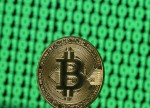
- All Instrument Types
- Indices
- Equities
- ETFs
- Funds
- Commodities
- Currencies
- Crypto
- Bonds
- Certificates
Please try another search

USD/JPY: Yen Steady as Japanese Inflation Dips

- Japanese core inflation falls to 2.5%, as expected
- US to release PCE Price Index on Friday
- USD/JPY has support at 141.57 and 141.03
- There is resistance at 142.60 and 143.14
The Japanese yen is showing little movement on Friday. In the European session, USD/JPY is trading at 142.03, down 0.06%.
Japanese Core Inflation Eases to 2.5%
Japan’s Core CPI, which excludes fresh fuel but includes fuel costs, dropped to 2.5% in November, matching the consensus estimate. This was down from the October gain of 2.9% and marked the lowest reading since July 2022. Still, it was the twentieth consecutive month that the core rate has exceeded the Bank of Japan’s target of 2%. The headline figure dropped to 2.8%, down from 3.3% in October.
The yen shrugged off the drop in inflation, taking a breather after surging 1% a day earlier. The sharp gains were driven by the third-estimate US GDP for Q3, which came in at 4.9%, lower than the second estimate of 5.2%. The drop in GDP was driven by weaker consumer spending, but the economy remains strong, as the 4.9% gain was the highest level since Q4 2021.
The BoJ released on Friday the minutes of its October 31 meeting, when the central bank unexpectedly tweaked its yield curve control (YCC) program. The yen took a bath and fell 1.78% on the day of the meeting, as the markets viewed the move as a step by the BoJ’s to phasing out its ultra-easy monetary policy. The minutes indicated that board members were divided on whether the BoJ should make clear that the tweak was not a step towards ending YCC, or should the Bank “not strongly deny” that the tweak could lead to an end of YCC. The debate highlights that board members are well aware that a shift in policy can have a significant impact on the currency markets, as was evident with the yen’s plunge following the October meeting.
The US wraps up the week with the PCE Price Index, which is considered the Federal Reserve’s preferred inflation indicator. The headline and core readings are expected to remain unchanged in November, at 0.2% and 0%, respectively. Recent inflation readings have had a strong impact on the movement of the US dollar, and that could be the case later today if the headline or core rate readings are wide of the estimates.
USD/JPY Technical
Related Articles

The US dollar fell last week due to Trump's inconsistent trade policies and signs of a slowing economy. February's non-farm payroll data disappointed, with unemployment...

Forex Strategy is Bearish: USD/JPY is currently at 146.76 in a 5th fractal wave in a channel. We are looking for a continuation to the ATR target at the 146.10 area, with a...
The Canadian dollar is steady at the start of the week. USD/CAD is trading at 1.4385, up 0.06% on the day. The Canadian dollar declined 0.50% on Friday after Canada’s job report...
Are you sure you want to block %USER_NAME%?
By doing so, you and %USER_NAME% will not be able to see any of each other's Investing.com's posts.
%USER_NAME% was successfully added to your Block List
Since you’ve just unblocked this person, you must wait 48 hours before renewing the block.
I feel that this comment is:
Thank You!
Your report has been sent to our moderators for review






Add a Comment
We encourage you to use comments to engage with other users, share your perspective and ask questions of authors and each other. However, in order to maintain the high level of discourse we’ve all come to value and expect, please keep the following criteria in mind:
Enrich the conversation, don’t trash it.
Stay focused and on track. Only post material that’s relevant to the topic being discussed.
Be respectful. Even negative opinions can be framed positively and diplomatically. Avoid profanity, slander or personal attacks directed at an author or another user. Racism, sexism and other forms of discrimination will not be tolerated.
Perpetrators of spam or abuse will be deleted from the site and prohibited from future registration at Investing.com’s discretion.